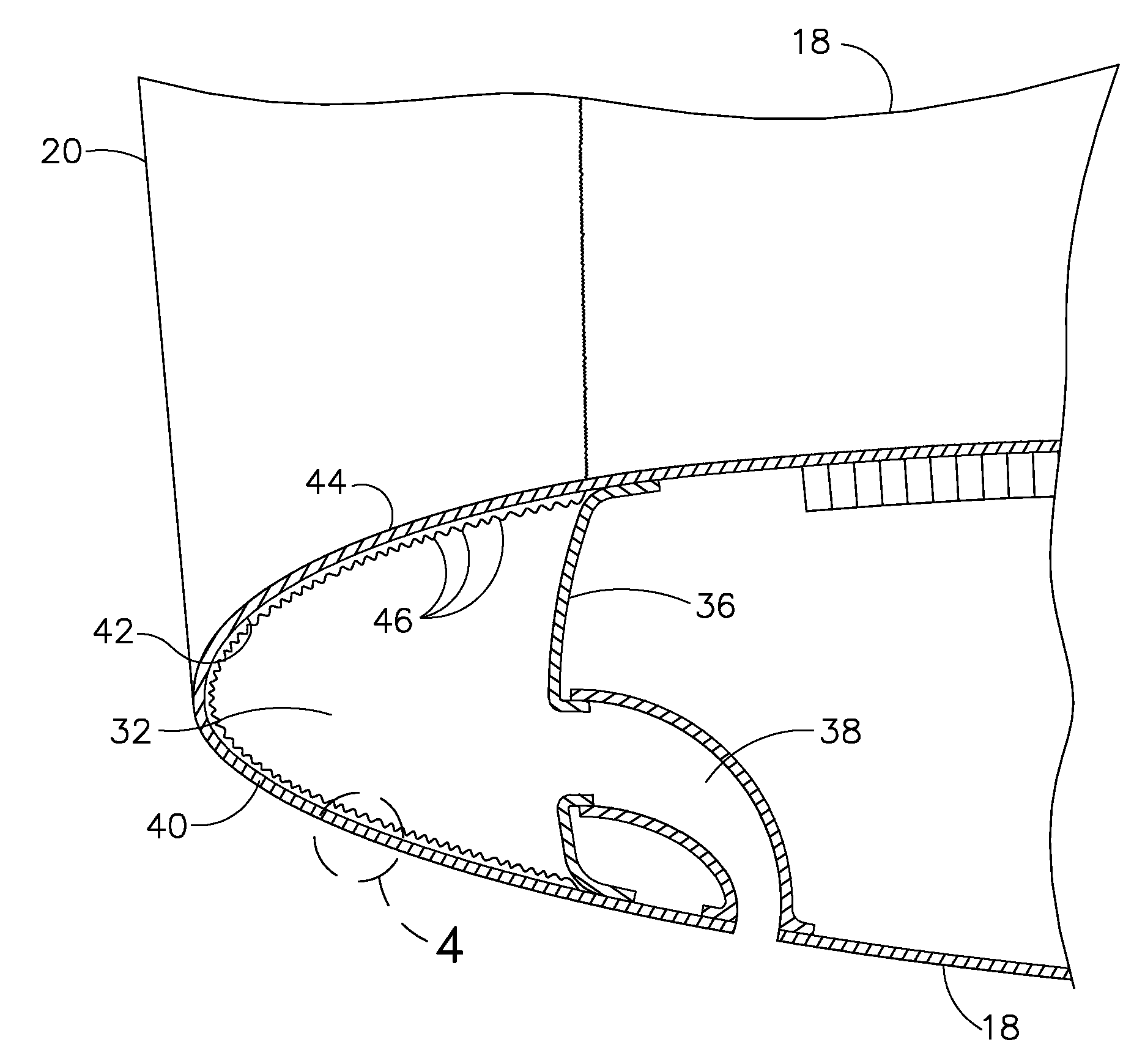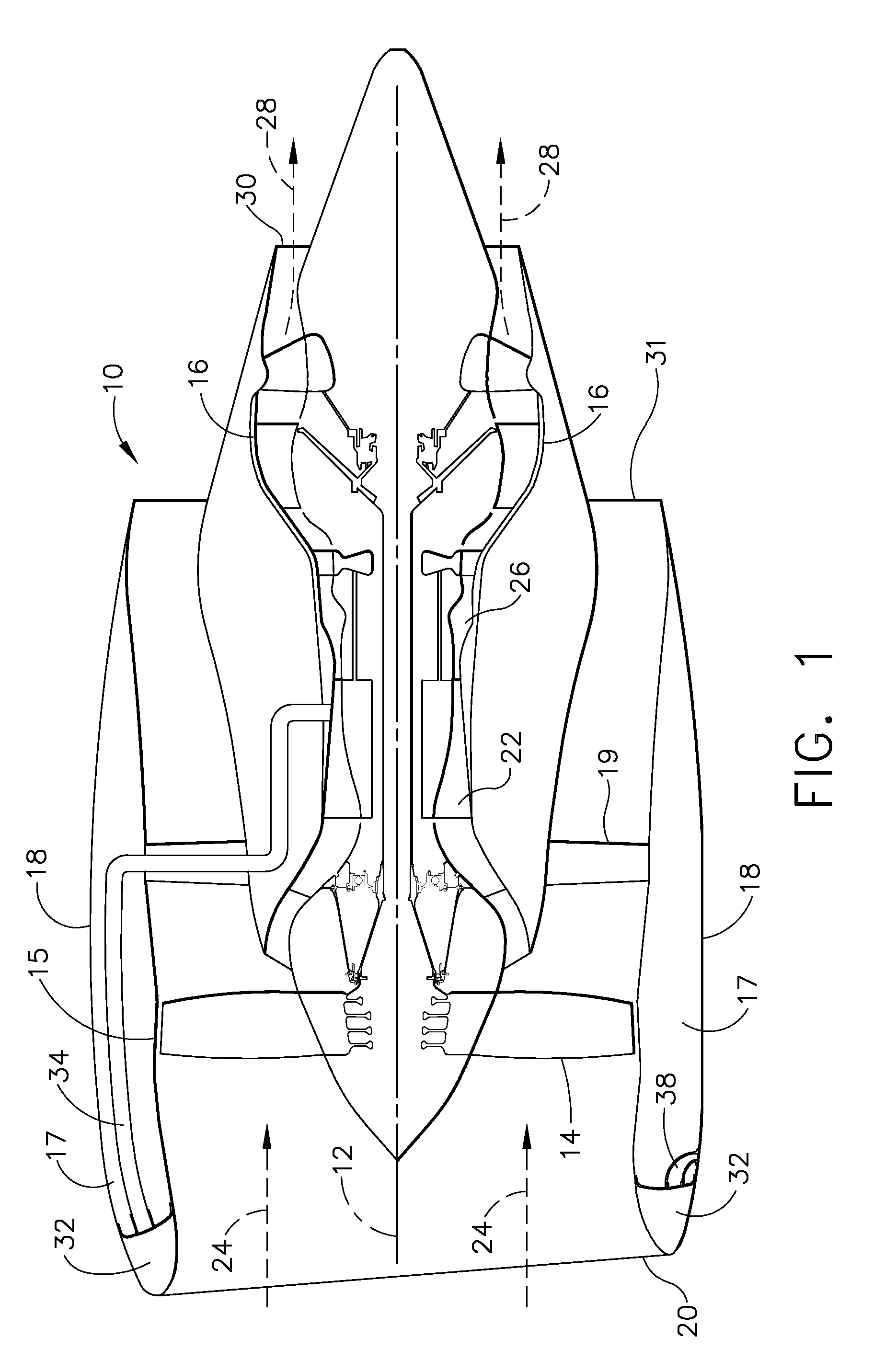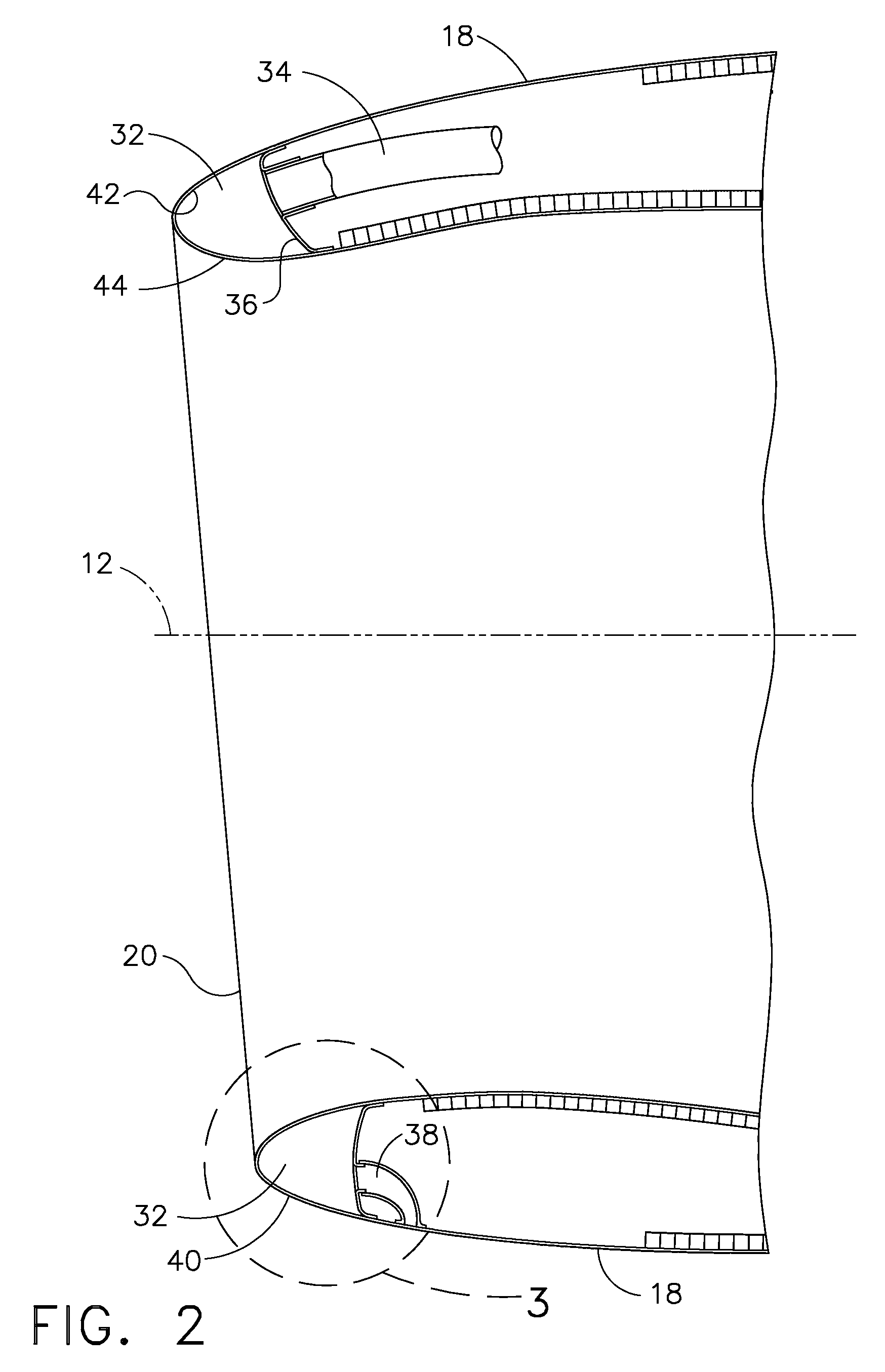Icing protection system and method for enhancing heat transfer
a technology of icing protection system and heat transfer, which is applied in the direction of heat exchange apparatus safety devices, light and heating equipment, propellers, etc., can solve the problems of increasing drag, adding weight, and ice formation on aircraft structures, and achieve the effect of enhancing heat transfer
- Summary
- Abstract
- Description
- Claims
- Application Information
AI Technical Summary
Benefits of technology
Problems solved by technology
Method used
Image
Examples
Embodiment Construction
[0023]Referring to the drawings in which identical reference numerals denote the same elements throughout the various views, FIG. 1 illustrates schematically a gas turbine engine, indicated generally at 10, of the type typically utilized to power modern aircraft. The engine 10 is symmetrical about a longitudinal axis 12 and includes a fan 14 powered by a core engine 16. The fan 14 includes a plurality of fan blades rotatably mounted within an annular fan casing 15 that surrounds the fan and at least a portion of the core engine 16. The “engine inlet” or “nacelle inlet”20 of the engine 10 is mounted to the forward flange of the fan casing 15. The core engine 16 includes a multistage compressor 22 having sequential stages of stator vanes and / or rotor blades that pressurize an incoming flow of air 24. The pressurized air discharged from the compressor 22 is mixed with fuel in the combustor 26 of the core engine 16 to generate hot combustion gases 28 that flow downstream through one or ...
PUM
| Property | Measurement | Unit |
|---|---|---|
| surface roughness | aaaaa | aaaaa |
| thickness | aaaaa | aaaaa |
| surface roughness | aaaaa | aaaaa |
Abstract
Description
Claims
Application Information
 Login to View More
Login to View More - R&D
- Intellectual Property
- Life Sciences
- Materials
- Tech Scout
- Unparalleled Data Quality
- Higher Quality Content
- 60% Fewer Hallucinations
Browse by: Latest US Patents, China's latest patents, Technical Efficacy Thesaurus, Application Domain, Technology Topic, Popular Technical Reports.
© 2025 PatSnap. All rights reserved.Legal|Privacy policy|Modern Slavery Act Transparency Statement|Sitemap|About US| Contact US: help@patsnap.com



